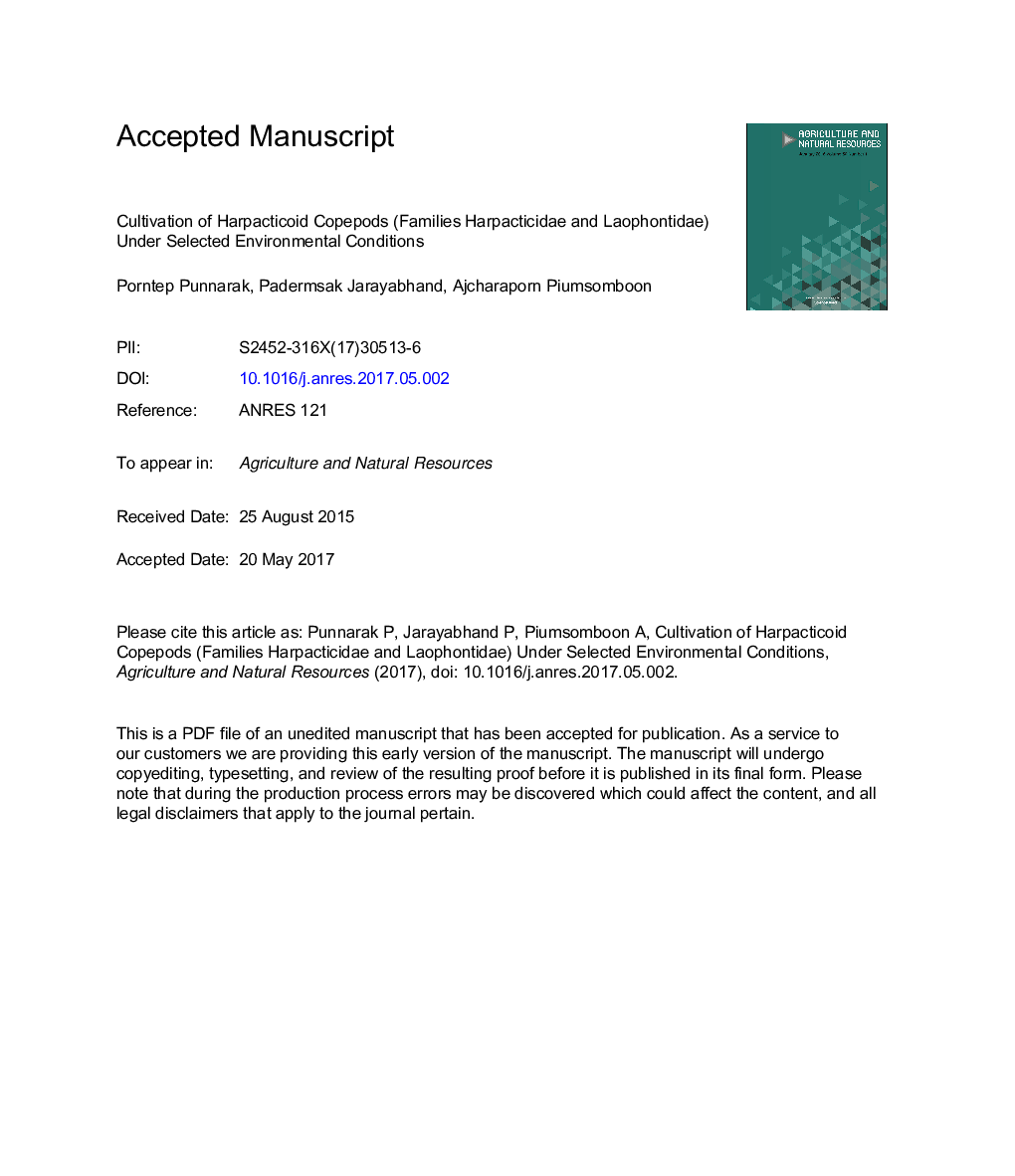| کد مقاله | کد نشریه | سال انتشار | مقاله انگلیسی | نسخه تمام متن |
|---|---|---|---|---|
| 6538072 | 1421008 | 2017 | 20 صفحه PDF | دانلود رایگان |
عنوان انگلیسی مقاله ISI
Cultivation of harpacticoid copepods (families harpacticidae and laophontidae) under selected environmental conditions
دانلود مقاله + سفارش ترجمه
دانلود مقاله ISI انگلیسی
رایگان برای ایرانیان
کلمات کلیدی
موضوعات مرتبط
علوم زیستی و بیوفناوری
علوم کشاورزی و بیولوژیک
جنگلداری
پیش نمایش صفحه اول مقاله

چکیده انگلیسی
The objective of this study was to find the optimal conditions for harpacticoid copepod cultivation at the laboratory scale. Harpacticoid copepods were collected from the macroalgae, Padina sp. and Amphiroa sp., and used to study the effects on their survival rates of temperature, salinity, diet, substratum and initial density. Mixed cultures of the dominant harpacticoid copepods (Families Harpacticidae and Laophontidae), were used for subsequent experiments. After 7â¯d, copepods reared at 30â¯Â°C showed the highest mean (±SE) survival rate (46.67â¯Â±â¯5.85%; pâ¯<â¯0.05), followed by the copepods cultivated at 25â¯Â°C and 35â¯Â°C, respectively. Harpacticoid copepods could survive in brackish water to hyper-saline water, between 10 practical salinity units (psu) and 40 psu, but not in freshwater (pâ¯<â¯0.05). In addition, they also showed favorable results with salinity at 27 psu and 30 psu with mean survival rates of 44.72â¯Â±â¯6.35% and 42.78â¯Â±â¯4.94%, respectively, which were higher than the mean survival rate of 26.67â¯Â±â¯13.33% recorded in salinity at 10 psu (pâ¯<â¯0.05). The feeding experiment was inconclusive since there were no significant differences between the survival rates of copepods on the different algal diets. On the other hand, copepods fed with commercial shrimp feed had the mean lowest survival rate (pâ¯<â¯0.05). No significant differences among the different sediment types were observed. However, harpacticoid copepods showed a preference for smaller-sized particles as higher survival rates were obtained for copepods reared in sand-silt sediment rather than in fine sand, coarse sand, vermiculite (artificial sediment) and no substrate. Culture at low densities such as 100 individuals/L and 500 individuals/L is suggested for initial cultivation based on this experiment.
ناشر
Database: Elsevier - ScienceDirect (ساینس دایرکت)
Journal: Agriculture and Natural Resources - Volume 51, Issue 4, August 2017, Pages 278-285
Journal: Agriculture and Natural Resources - Volume 51, Issue 4, August 2017, Pages 278-285
نویسندگان
Porntep Punnarak, Padermsak Jarayabhand, Ajcharaporn Piumsomboon,